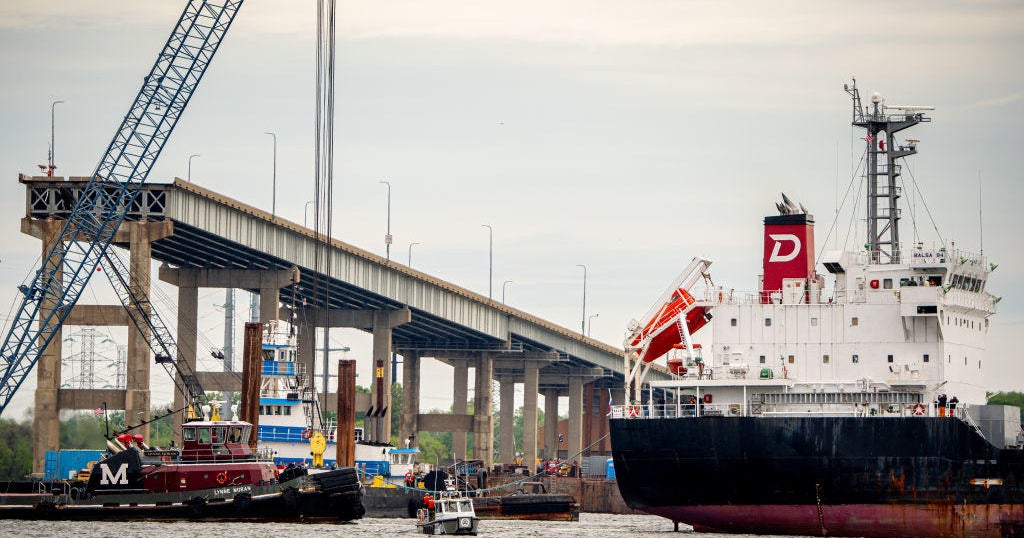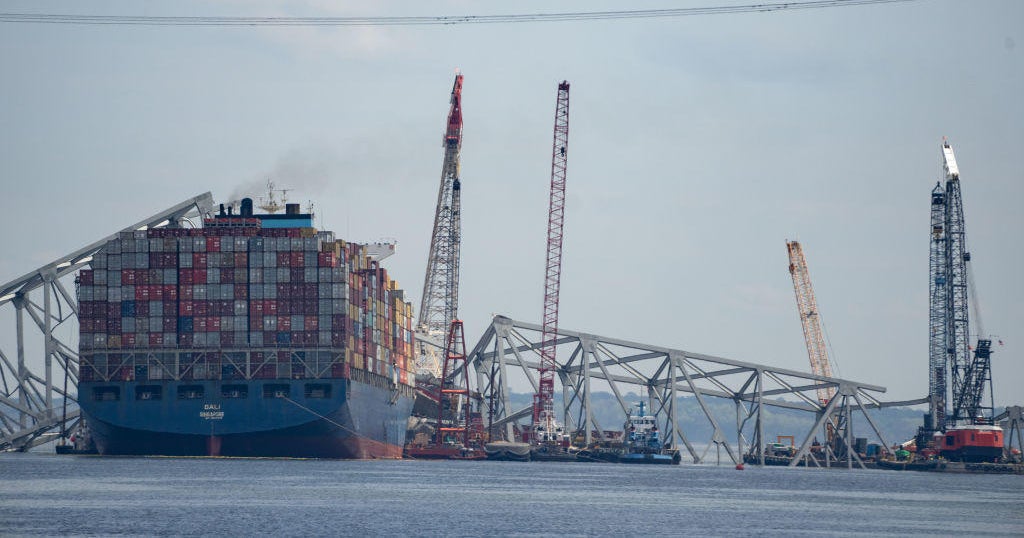Businesses Prepare For Grand Prix In Baltimore
BALTIMORE (AP) -- Judi DiGioia is ready to pull 17-hour shifts at Morton's The Steakhouse when the Baltimore Grand Prix invades the Inner Harbor over Labor Day weekend.
"It's a little scary," DiGioia said. "A little exciting and scary all at the same time."
For three days, race cars will be zooming by mere yards from where restaurants, hotels, business towers and even a centuries-old church sit during the Baltimore Grand Prix. With the track coursing through many of Baltimore's main thoroughfares, many businesses have been wondering how they'll stay open for business when the racing starts Sept. 2, a Friday. And they are determined not to lose any revenue.
The event is expected to draw more than 100,000 people and generate $11 million in direct city tax revenue.
DiGioia, director of sales and marketing for the restaurant at South Charles and Conway streets, said that although Morton's doesn't open until lunchtime, she's prepared to spend Labor Day weekend living at the restaurant to begin work at 7 a.m.
Morton's approximately 40 other employees will be faced with the same daunting task of getting into a restaurant that may be in lockdown by large crowds, race course barriers, grandstands, race cars and entertainment tents.
"When they talk about 100,000 people that need to get in here, I figure the closest parking is going to be in Towson," DiGioia joked.
Buildings particularly in the crossfire of the race include the Hilton Baltimore, Sheraton Inner Harbor Hotel and Hyatt Regency Baltimore, Harborplace & The Gallery, the Baltimore Convention Center, the B&O Warehouse at Camden Yards, and the Verizon building at 1 E. Pratt St.
"The only reason I'm not looking forward to the Grand Prix is because it means summer's over," said Jon Koscher, general manager of the Sheraton Inner Harbor Hotel. He said all 337 of his hotel rooms are booked for the weekend. Koscher said the downtown Baltimore hotel industry has been meeting with race organizers every two weeks to discuss how the hotels can best take advantage of the situation.
Parking at the Gallery will still be accessible, although the locations of the pedestrian crosswalks near the Harborplace & The Gallery are expected to change, said General Manager Christopher Schardt. And janitorial staff will be increased by 50 percent that weekend at the shopping centers, he said.
Race organizers and city officials say they aren't too worried about the additional noise or traffic that will come with the race. Organizers have been holding meetings with businesses and community groups in the area that will be affected by the road closures to answer questions about the weekend and even the construction during the weeks leading up to the race.
"They're expecting this doomsday scenario about getting into the parking garages come Friday," said Baltimore City Council member William H. Cole IV, who represents much of the downtown area and has been a race supporter from the beginning. "Every garage will be fully accessible to people who work in those buildings."
Plans for what streets will be blocked and when, as well as for alternative parking and routes for businesses in the area, will be distributed to businesses and building managers in the next few weeks, Cole said. The plans will also be posted on the Baltimore Grand Prix's website.
Many of the non-tourism-related businesses along the track are still figuring out what work schedules will be like, but many say they are tentatively preparing to have a flexible work day.
T. Rowe Price's office at 100 E. Pratt St. will stay open during the race, and its investor center at Lombard and Calvert streets will remain open, but some associates and services like trading will be moved to the company's alternative site in Linthicum, said spokesman Brian Lewbart.
"We expect that some associates will choose to work from the office, while others will choose to work remotely or from home," Lewbart said.
The University of Maryland's downtown campus, which has properties scattered along Lombard, Redwood, Pine and Baltimore streets, will close for four days because of the Grand Prix, from Friday through Labor Day. But the medical center and research buildings will stay open, and security will be stepped up for the weekend, since many of the campus garages are public.
Any changes for employee parking access or ambulance routes will be announced toward the end of July, said Bill Seiler, assistant director of media relations for the University of Maryland Medical Center and the University of Maryland School of Medicine.
Campus police will work with the city to patrol the area, said Robert Rowan, University of Maryland associate vice president for facilities and operations.
Friday and Saturday classes will be rescheduled, and new students planning to move onto campus will be warned about the added traffic, Rowan said. The university will keep about 4,000 of its about 6,000 parking spaces open to the public during the weekend.
Constellation Energy Group Inc., which has offices at 750 E. Pratt St. and 111 Market Place, will allow certain departments to work from home if traffic and detours prove to be difficult, said spokesman Lawrence McDonnell. Some employees may be sent to alternate offices, but otherwise business will continue as usual, he said.
Baltimore Gas & Electric Co. at 110 W. Fayette St. will enforce a similar work-from-home policy for its downtown employees, at the discretion of supervisors, said spokeswoman Linda Foy. Many employees will be on standby for the race, should they be needed for emergency work.
Among the plans to help out traffic kinks are complimentary grounds passes, free alternative parking and special access for deliveries that weekend.
Cole said businesses and traffic won't be truly affected until the Thursday night before the race, after the Orioles finish their game against the Toronto Blue Jays at Camden Yards.
Starting Friday, Sept. 2, and continuing through the weekend, Light, Conway, Pratt and Russell streets will be closed between 7 a.m. to 7 p.m., Cole said. Light Rail and MARC train service will run without interruption, while MTA bus service and the Charm City Circulator will have modified schedules, still to be released.
During July, Baltimore City Department of Transportation officials will hold open houses to inform businesses and city employees and residents of what the closures will be, as well as get feedback, Cole said. Then, transportation schedules and closures will be posted on the Baltimore Grand Prix's website.
Barricades around the track will be set up in off-hours; during rush hours the barriers won't be in any driving lanes, but rather up on the curb, he said.
Some single-lane closures are the worst to be expected, while some one-way streets may be turned into two-way thoroughfares for those headed for parking lots near the race course.
Organizers said they will make sure deliveries to restaurants, businesses and retail outlets aren't interrupted.
Tim Ramsberger, vice president and general manager of the Honda Grand Prix of St. Petersburg, Fla., said the key to working with businesses and properties around the race course is communication and discovering each business's particular issues. In St. Petersburg, Ramsberger and his staff promoted the businesses around the track, and asked stores to stay open longer for visitors coming off the track once the race was over.
Ramsberger said Baltimore's course in particular is a challenge because of the different types of properties along the track, especially the four hotels.
"You have got a tremendous challenge there," Ramsberger said. "But also, a tremendous opportunity. It takes some creative thinking. The first year's going to be a challenge because it's so much unknown."
(Copyright 2011 by The Associated Press. All Rights Reserved.)



